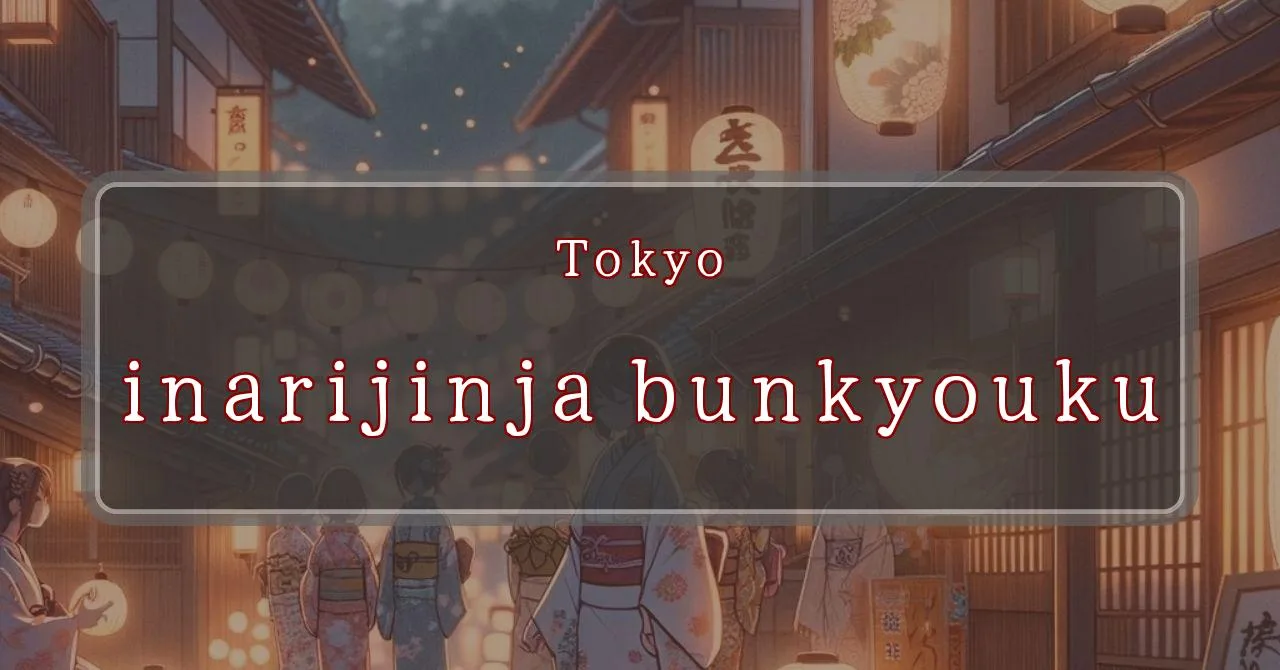Enchanting melodies and vibrant colors at Inari Shrine
Basic Information
Inari Shrine is a Shinto shrine located in Mejirodai, Bunkyo Ward, Tokyo. It is dedicated to Inari, the Shinto deity of rice and sake.
- Address: 3-26-1 Mejirodai, Bunkyo-ku, Tokyo 112-0015
- Phone Number: 03-3945-4808
- Access: 5-minute walk from Gokokuji Station on the Tokyo Metro Yurakucho Line, or 5-minute walk from Mejirodai 3-chome bus stop on the Toei Bus bound for Shinjuku Nishiguchi
- Festival Days: Nearest Sunday to September 10th
Main Events and Attractions of the Festival
The Inari Shrine Festival is a lively and colorful event that attracts many visitors each year. The main events and attractions of the festival include:
Mikoshi Procession
The highlight of the festival is the mikoshi procession, where a portable shrine is carried through the streets of the neighborhood. The mikoshi is decorated with colorful tapestries and streamers, and it is carried by a team of people. The procession is accompanied by music and dancing, and it creates a festive atmosphere.
Yatai Village
During the festival, a yatai village is set up in the grounds of the shrine. Yatai are food stalls that sell a variety of traditional Japanese foods, such as takoyaki, yakisoba, and cotton candy. There are also games and activities for children, such as goldfish scooping and ring toss.
Kagura Performance
Kagura is a traditional Japanese performing art that tells stories from Japanese mythology. During the festival, kagura performances are held in the shrine’s kagura殿 (hall). The performances are accompanied by music and dance, and they are a beautiful and unique way to learn about Japanese culture.
Benefits and Deities
Inari Shrine is dedicated to Inari, the Shinto deity of rice and sake. Inari is also associated with wealth and prosperity, and many people visit the shrine to pray for good fortune in business and finance.
History and Background
Inari Shrine was founded in 1622, during the Edo period. The shrine was originally located in Edo Castle, but it was moved to its current location in 1868. The shrine has been rebuilt several times over the years, but the current buildings date back to the early 20th century.
Blessings and Deities
Inari Shrine is dedicated to Inari, the Shinto deity of rice and sake. Inari is also associated with wealth and prosperity, and many people visit the shrine to pray for good fortune in business and finance.
- Benefits of Praying at Inari Shrine:
- Good fortune in business and finance
- Wealth and prosperity
- Success in agriculture and fishing
- Protection against fire and theft
- Safe childbirth and easy delivery
Origin and History
Inari Shrine was founded in 1622, during the Edo period. The shrine was originally located in Edo Castle, but it was moved to its current location in 1868. The shrine has been rebuilt several times over the years, but the current buildings date back to the early 20th century.
- Key Dates in the History of Inari Shrine:
- 1622: Inari Shrine is founded in Edo Castle.
- 1868: The shrine is moved to its current location.
- Early 20th century: The current shrine buildings are constructed.
Tips and Notes for Visitors
Here are some tips and notes for visitors to Inari Shrine:
- Respect the Shrine’s Customs and Traditions:
- Remove your shoes before entering the main shrine building.
- Wash your hands and mouth at the chozuya (water purification basin) before praying.
- When praying, bow twice, clap your hands twice, and then bow once more.
- Dress Appropriately:
- It is considered disrespectful to visit the shrine in shorts, tank tops, or other casual clothing.
- Be Mindful of Your Behavior:
- Keep your voice down and avoid talking loudly in the shrine.
- Do not touch or lean on the shrine’s buildings or statues.
Parking Information
There is no dedicated parking lot for Inari Shrine. However, there are several public parking lots located nearby.
- Nearby Parking Lots:
- Mejirodai Public Parking Lot (5-minute walk from the shrine)
- Gokokuji Station Parking Lot (10-minute walk from the shrine)
- Myogadani Station Parking Lot (15-minute walk from the shrine)
Popular Stalls and Food Carts in Recent Years
| Type of Stall | Description |
|---|---|
| Takoyaki | A staple at Japanese festivals. Characterized by a crispy outside and a creamy inside. |
| Jaga Butter | A simple yet popular snack of hot potatoes lavishly topped with melted butter. |
| Baby Castella | Small castella cakes, sweet and fluffy treats enjoyed by children and adults alike. |
| Grilled Ayu with Salt | Fresh ayu fish grilled whole with salt, a savory taste of Japanese summer. |
| Shaapin | A unique gourmet item influenced by foreign cuisine, with a chewy skin wrapping the filling. |
| Okonomiyaki | A Japanese grilled dish where you often choose your own ingredients for a personalized flavor. |
| Cotton Candy | A fluffy, sweet snack that’s extremely popular with children. |
| Chocolate Banana | A banana coated in chocolate, a fun and visually appealing dessert. |
| Kushiyaki | Various types of ingredients skewered and grilled, an easy-to-enjoy snack. |
| Yakisoba | Fried noodles mixed with a special sauce, a fast food favorite in Japan. |



